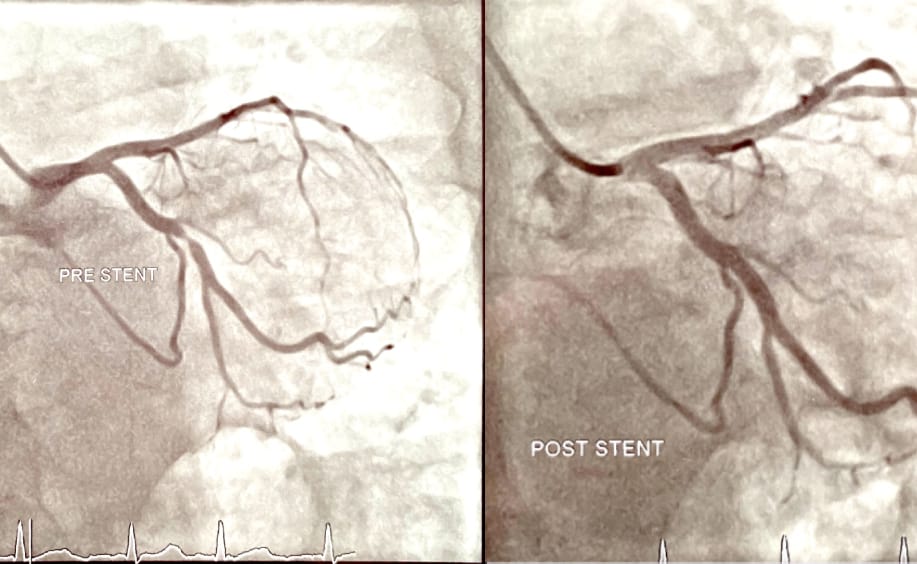Coronary Angiography or angiogram is a procedure which looks closely at your coronary arteries to see if they are narrowed or blocked. It uses a special type of X-ray dye. Your doctor may recommend a coronary angiogram if you are suspected to have coronary artery disease. Coronary arteries can become blocked/clogged from a build-up of cholesterol or fatty substance called plaque. This build up causes your arteries to become narrow and hard, meaning less blood is able to reach your heart. An angiogram can help your Cardiologist to decide the best course of treatment, including coronary angioplasty, coronary bypass surgery or medication.
List of indications where angiogram is useful
To investigate symptoms such as chest pain and shortness of breath.
To investigate abnormal heart rhythms.
To further investigate abnormal screening tests.
To assess bypass grafts or coronary arteries that have been previously stented.
Preparation
You must not eat or drink anything 6 hours prior to your procedure.
You can take your regular medication with a small sip of water. If you’re unsure about your medication, please contact us. Your Cardiologist will advise you if certain medications need to be omitted prior to your procedure
If you are taking Warfarin, you will usually be asked to stop taking this for 3-4 days prior to your procedure.
DO NOT stop taking Aspirin or Plavix/ Iscover (Clopidogrel).
If you have Diabetes and take insulin, you may need to omit this the night before and/or the morning of your test to avoid low blood sugar level.
Procedure
The Coronary angiogram takes place in a cardiac catheter laboratory or operating theatre. You will be awake throughout the procedure and you doctor may offer you sedation to help you relax.
You will be given local anaesthetic to numb or wrist or groin.
A small catheter is gently inserted into an artery in your wrist or groin and mode it inside the artery up to the heart.
Xray dye is injected into the coronary arteries via the catheter which can reveal any blockages or narrowing in the coronary arteries.
A series of x-ray pictures will be taken
Catheter is removed after the procedure, which usually takes less than an hour. Pressure will be applied to the site where it was inserted.
You will be moved to the recovery area or to the ward to rest. The puncture site may be tender or sore and you might experience some bruising. This should go away after two weeks.
You will need to organise for someone to pick you up from the hospital and take you home.
Once you return home, it is important to follow your Cardiologist’s recommended lifestyle changes and to visit your doctor or call an ambulance if you experience any serious symptoms.
Results
Based on what the coronary angiogram reveals, your Cardiologist will decide if you need to stay overnight in the hospital and the best treatment for you.
You will be informed of the results on the day and a follow appointment will be arranged.
Stents and Angioplasty
Coronary Angioplasty and Stenting is an invasive procedure that open narrowed or blocked coronary arteries, restoring blood flow to the heart muscle. In this procedure, the interventional Cardiologist will widen your blocked artery with a balloon (angioplasty) and a small, wire mesh tube (stent).
It is normally done in conjunction with Coronary Angiogram. Preparation and care is the same as if you are having an angiogram.
Have Questions?
Make an Appointment to get all your cardiology questions answered by our experienced team
Quick and Easy Consultation & Referral Process

